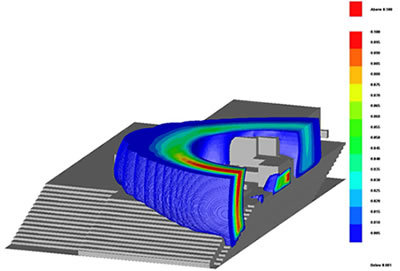
DNV GL is launching two Computational Fluid Dynamics joint industry projects to meet the oil and gas’s need for more cost efficient and precise decision support.
The JIPs have been launched in response to the oil & gas industry’s need to develop cost effective designs without compromising safety using CFD. Both JIPs are still welcoming new participants.
The first JIP will develop guidelines on optimal and cost effective gas detector allocation, and the second JIP will improve explosion safety while avoiding costly over-dimensioning of topside structures, through an updated congestion factor database.
The proposed JIP on Gas Detector Allocation aims to address the issue of how best to optimise the position detectors by integrating the detailed physical description of consequence modelling by CFD simulations, with process and environmental conditions, incorporating the best practices in international standards.
“Applying CFD dispersion simulation in determining the optimal number and position of gas detectors is a big step towards an improved detector network. However, the lack of industry guidance on gas detector deployment needs to be addressed to reduce the uncertainties in assessing efficient final gas detector layout,” said senior consultant Rafael Storch.
“The industry needs more assertive guidelines addressing uncertainties in the results, ultimately reducing the number of sensors and providing optimal gas detector mapping.”
The explosion safety JIP is inviting participants to share offshore as-built geometries. This will then be available to participants for improved congestion level data; reducing uncertainty and increasing efficiency in early phase engineering and explosion designs.
The improved congestion data will differentiate the congestion level and size distribution for each type of area based on type of process module or utility unit, type of installation such as an FLNG and other floaters or fixed platforms, as well as the congestion levels in typical skids and for specific equipment packages.
The project is expected to last one year.